Male. © Peter J. Bryant. |
Purplish Copper Lycaena helloides Lepidoptera: Lycaenidae
|
Female. © Peter J. Bryant. |
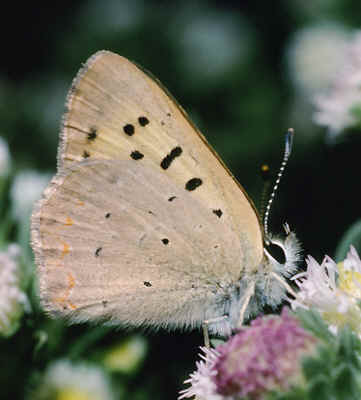 Male underside. © Peter J. Bryant. |
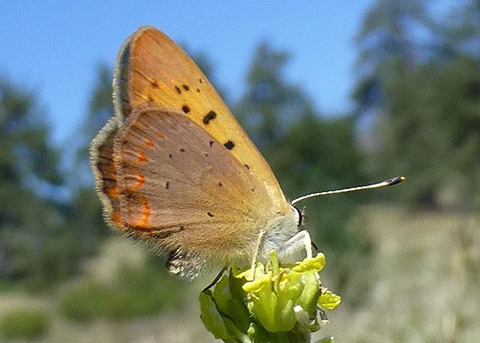 Male. Lake Cuyamaca, San Diego County, CA. 9-15-13. © Robert Gorman |
|
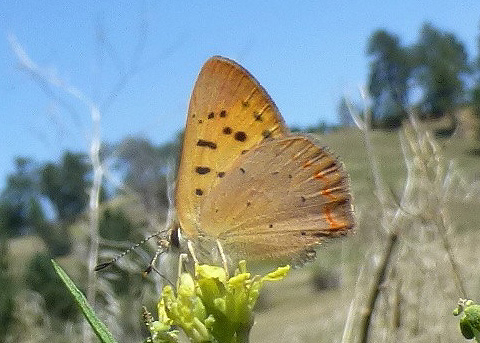 Male. Lake Cuyamaca, San Diego County, CA. 9-15-13. © Robert Gorman |
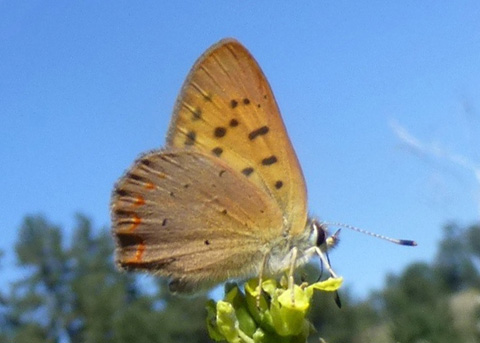 Male. Lake Cuyamaca, San Diego County, CA. 9-15-13. © Robert Gorman |
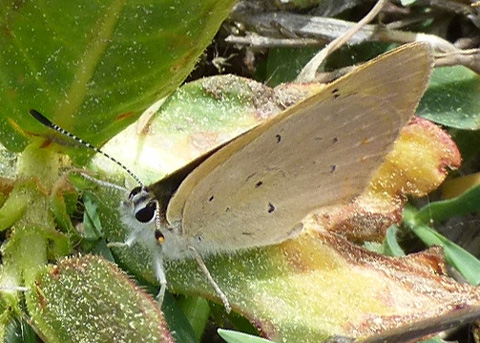 Laguna Meadows, San Diego County, CA. 6-9-13. © Robert Gorman |
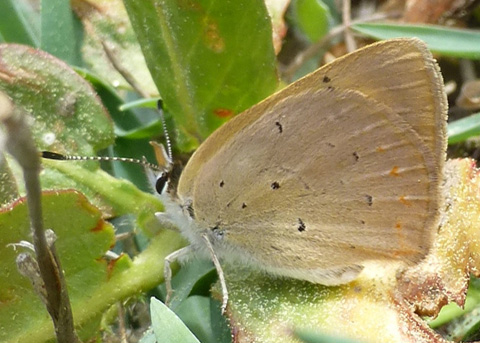 Laguna Meadows, San Diego County, CA. 6-9-13. © Robert Gorman |
|
Characteristics: Ventral wing golden-colored with black spots. Easily distinguishable from other locally occurring coppers, when dorsal wing patterns are compared. Forewing length: 9-16 mm. Habitats, Behavior: The Purplish Copper usually frequents moist areas. It is also usually colonial, and hence, local in occurrence. Distribution: Old records are from Anaheim, the Laguna Lakes, Aliso Canyon and several other locations. Recent records are primarily from the moist canyons of the Santa Ana Mountains, although Ron Vanderhoff has taken it recently in the Santa Ana River area of Costa Mesa. Flight Period: Multiple brooded. Adults fly from March to November. Larval Foodplants: Wild rhubarb, Rumex spp. (Polygonaceae). Four species occur in Orange County: R. hymenosepalus, R. salicifolius, R. crispus, and R. acetosella. R. salicifolius occurs at the Laguna Lakes and may have been utilized as a foodplant there. Marsh and Abbot (1972) record R. hymenosepalus growing near the mouth of the Santa Ana River and further up the riverbed, at Imperial Highway. The first record may explain the presence of helloides in that area. R. crispus is the most common of the four species in the county, but has not yet been recorded as an actual foodplant for helloides. It is widely distributed in damp and disturbed habitats (Gordon Marsh, personal communication). Other Remarks: Lycaena helloides no doubt still occurs in the San Joaquin Marsh, Ortega Highway area, Silverado Canyon, and perhaps also at the Laguna Lakes, as these areas haven't been greatly disturbed since the last specimens were taken and Dock (R. hymenosepalus) and/or R. crispus grow at these locations. It may occur in Santa Ana Canyon as well. Helloides has become considerably less common in the last 50 years in southern California. Coolidge (1924a) writes, "About Los Angeles two species of butterflies are seen disporting about the city lawns; one being Hylephila phyleus and the other helloides." Most of our known county records are forty to fifty years old. Urbanization probably has had a great effect in reducing the distribution of helloides in our area, particularly when the coastal freshwater marshes in Orange County were eliminated. From Orsak, L. J. (1977). The Butterflies of Orange County, California. Center for Pathobiology Miscellaneous Publication #3. University of California Press, New York. 349pp. Return to Butterflies and their larval foodplants |
|
